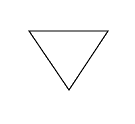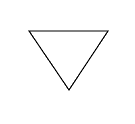

| Hubble Space Telescope Call for Proposals for Cycle 11 | |||
|
|
4.2 Parallel Observations
Since all of the scientific instruments are located at fixed positions in the telescope focal plane, it is possible to increase the productivity of HST by observing simultaneously with one or more instruments in addition to the primary instrument. Those additional observations are called parallel observations.
Since each instrument samples a different portion of the HST focal plane (see Section 2.2 of the HST Primer), an instrument used in parallel mode will normally be pointing at a "random" area of sky several minutes of arc away from the primary target. Thus parallel observations are usually of a survey nature. However, many HST targets lie within extended objects such as star clusters or galaxies, making it possible to conduct parallel observations of nearby portions of, or even specific targets within, these objects.
Parallel observations are never permitted to interfere significantly with primary observations; this restriction applies both to concurrent and subsequent observations. Some examples of this policy are the following:
- A parallel observation will not be made if its inclusion would shorten the primary observation.
- Parallel observations will not be made if the stored command capacity or data volume limits would be exceeded.
Depending on whether a parallel observation is related to any specific primary observation, it is defined either as a coordinated parallel or pure parallel. Coordinated parallel observations are observations related to a particular primary observation in the same proposal. Pure Parallel observations are unrelated to any particular primary observation (i.e., the primary observation is in another program).
4.2.1 Coordinated Parallel Observations

Coordinated Parallel observations must be marked in the `Observation Summary' section of the proposal (see Section 8.14) using the keyword `CPAR' (see Table 8.1).
Coordinated Parallels use one or more instruments, in addition to and simultaneously with the primary instrument in the same proposal, e.g., to observe several adjacent targets or regions within an extended object. Proposals that include coordinated parallel observations should provide a scientific justification for and description of the parallel observations. It should be clearly indicated whether the parallel observations are essential to the interpretation of the primary observations or the science program as a whole, or whether they address partly or completely unrelated issues. The parallel observations are subject to scientific review, and can be rejected even if the primary observations are approved.
Proposers are not allowed to add coordinated parallel observations in Phase II that were not explicitly included and approved in Phase I.
4.2.2 Pure Parallel Observations

Pure Parallel observations must be marked in the `Observation Summary' section of the proposal (see Section 8.14) using the keyword `PPAR' (see Table 8.1).
Proposals for pure parallel observations may specify either specific or generic targets, although the latter are more common. Appropriate scheduling opportunities will be identified by STScI.
Experience with pure parallel observations over the last several years indicates that parallel observing programs should be kept simple, in order for them to schedule on top of the typical prime observing programs. Parallel programs requiring multiple successive orbits are less likely to schedule than those which can be executed in a single orbit (over the past year, of the parallel visits scheduled, 84% were a single orbit in duration, 11% were two orbits, 4% were three orbits, while four and five orbits were each about 1%). Due to resource constraints at STScI, only a limited number of pure parallel programs can be accepted in each cycle.
A "Default" HST Archival Pure Parallel Program has been in place since Cycle 7. This program consists of observation types using each of the possible pure parallel instruments and is used to obtain uniform, non-proprietary data sets for the HST Data Archive during parallel observing opportunities not used as coordinated or pure parallel GO observations. A plan for Cycle 11 observations has been developed by a Parallel Working Group chartered by the STScI. The scientific rationale for the observations, a description of the observations, and additional information can be found on the HST Archival Pure Parallel Program Web Page.
STScI encourages submission of:
- Archival Research proposals to analyze data obtained as part of the HST Archival Pure Parallel Program in previous cycles.
- GO pure parallel proposals for observations that differ from the Cycle 11 Default HST Archival Pure Parallel Program.
- GO pure parallel proposals to carry out, for each of the instruments, either selected pieces or the entire Cycle 11 Default HST Archival Pure Parallel Program. The advantage of such proposals for GO investigators, if approved, is that they become eligible for funding (U.S. Investigators only) and will have responsibility for the Phase II implementation of the proposed part of the program. In addition, investigators in this category will be asked to participate in a reconstituted Parallel Working Group to refine the observing strategy of the Default Parallel Program for each scientific instrument, and to monitor the observations to assure that high quality data are taken. This coordination will be important for the final definition of the program but will not have to be extended to the data analysis phase.
The review panels and TAC will select the best science and prioritize the parallel programs, including the Default Program. GO Programs may well replace the Default Program in order to keep the total number of parallel programs at a supportable level.
As in previous Cycles, all data taken in the context of the Default HST Archival Pure Parallel Program will be non-proprietary. GOs proposing for pure parallel programs should realize that unless they also request zero or short proprietary time, their proposals might suffer compared to others in the peer review process.
4.2.3 Restrictions and Limitations on Parallel
ObservationsParallel Observations with ACS
When ACS is the primary instrument, it permits WFC parallel observations with HRC in prime and vice versa (so called auto-parallels). The filter choice for auto-parallels is predetermined by the filter used in the prime observation (see the ACS Instrument Handbook for details). For this reason, auto-parallels are created by software and execute automatically as pure parallels. Even though the observer does not specify auto-parallels in his/her proposal, the parallel data are proprietary, exactly in the same way as the prime data. It depends on the primary exposures whether or not auto-parallels can be created.
The ACS may generally be used for either pure or coordinated parallel observations with any other instrument as primary. However, when WFPC2 is the primary instrument, then ACS may only be used for pure parallel observations with either WFC or HRC, and not for coordinated parallel observations.
The SBC may be used for coordinated parallel observations with any instrument other than WFPC2 as primary, but only if the telescope orientation is exactly specified and the field passes bright-object checking. The SBC may not be used for pure parallel observations.
Parallel Observations with FGS
The FGS cannot be used as a parallel instrument.
Parallel Observations with NICMOS
NICMOS may be used for either pure or coordinated parallel observations with any other instrument as primary. Note that observations with different NICMOS cameras at the same time are not considered parallel observations.
Parallel Observations with STIS
The STIS/CCD detector may be used for either pure or coordinated parallel observations with any other instrument as primary.
The STIS/MAMA detectors may be used for coordinated parallel observations with any other instrument as primary, but only if the telescope orientation is exactly specified and the field passes bright-object checking. The STIS/MAMA detectors may not be used for pure parallel observations.
Parallel Observations with WFPC2
The WFPC2 may generally be used for either pure or coordinated parallel observations with any other instrument as primary. However, when ACS is the primary instrument, then WFPC2 may only be used for pure parallel observations and not for coordinated parallel observations.
Pointing Accuracy for Parallel Observations
The spacecraft computers automatically correct the telescope pointing of the primary observing aperture for the effect of differential velocity aberration. This means that image shifts at the parallel aperture of 10 to 20 mas can occur during parallel exposures.
|
Space Telescope Science Institute http://www.stsci.edu Voice: (410) 338-1082 help@stsci.edu |